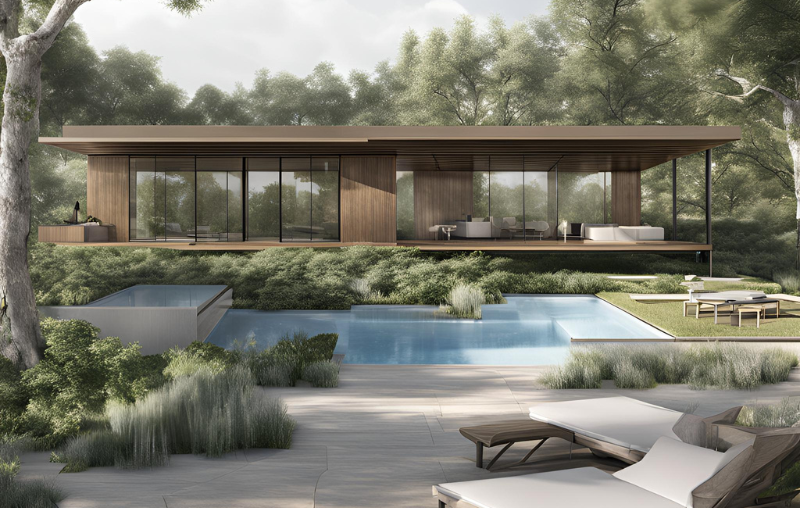Landscape rendering is a powerful tool for visualizing outdoor spaces, whether for residential, commercial, or public projects. It brings architectural plans to life by showcasing detailed representations of plants, trees, terrain, and structures in 3D, helping designers, architects, and clients make informed decisions.
However, the cost of landscape rendering can vary widely depending on several factors, including the complexity of the design, the level of detail required, and the type of rendering service chosen.
In this article, we’ll explore the key elements that influence landscape rendering costs, offering insight into what you can expect to pay and how to budget for your project.
Whether you’re a landscape architect or a homeowner looking to visualize your garden design, understanding these cost factors will help you make the best investment in your project.
What is Landscape Rendering?
Landscape rendering is the process of creating visual representations of outdoor spaces, often using 3D modeling and computer-generated imagery (CGI). This technique helps architects, designers, and landscapers showcase how a space will look once it’s completed, giving clients a realistic preview of their future gardens, parks, or outdoor areas.
In landscape rendering, designers create detailed drawings and digital models of the site, adding elements like trees, flowers, walkways, fountains, and outdoor furniture. The goal is to represent the design in a way that allows clients to understand the layout, scale, and aesthetic of the space.
By using 3D software, designers can even simulate how the landscape will change with different lighting conditions, seasons, and times of day.
These renderings are essential for making design decisions, helping both clients and professionals visualize the result. They can also highlight potential issues early on, such as how elements may interact with each other or the surrounding environment.
Landscape renderings can be presented as still images or videos, allowing clients to explore the design from multiple angles.
Factors Influencing Landscape Rendering Costs
Landscape rendering costs can vary based on several factors, all of which impact the time, effort, and resources needed to create a high-quality visual representation of a landscape design. Here are some of the main factors that influence these costs:
1. Project Complexity: The more detailed and intricate the landscape design, the higher the cost. Complex features like water elements, diverse plant species, and intricate hardscaping require additional time and skill to render.
2. Size of the Area: Larger landscapes, whether it’s a residential garden or a public park, involve more elements to be modeled and rendered. This increases both the time and computational power needed for the project.
3. Level of Detail: Higher levels of detail in the rendering, such as realistic textures for plants, terrain, and structures, demand more time and advanced techniques, which can raise costs.
4. Software and Technology: The type of software used plays a big role. Advanced 3D rendering tools that produce realistic, high-quality visuals may require more expensive software or specialized skills.
5. Revisions and Changes: If the client requires multiple revisions or changes during the design process, the cost will rise accordingly. The more back-and-forth that’s needed, the more time the designer will spend refining the render.
6. Designer Experience: A highly experienced designer with a strong portfolio may charge higher fees, but their expertise ensures better results in less time.
Average Price Ranges for Landscape Rendering Services
When considering landscape rendering services, it’s important to understand the price ranges, as costs can vary based on several factors. On average, landscape rendering services can cost anywhere between $500 and $3,000 per project.
For basic renderings, like simple 2D visuals or basic 3D models, prices usually start around $500 to $1,000. These are often used for smaller residential projects or preliminary design concepts.
For more detailed 3D renderings that include realistic elements like plants, textures, and lighting, the cost can range from $1,500 to $2,500. These types of renderings are typically needed for larger residential or commercial landscapes that require a higher level of detail and realism.
At the higher end, premium landscape renderings with advanced features such as animation, walkthroughs, or interactive designs can cost $2,500 or more. These services are often used for large-scale developments, high-end residential projects, or commercial landscapes that require extensive design and presentation.
Additional Costs to Consider
When working on millwork projects, there are several additional costs that should be considered beyond just materials and labor. First, there are design and drafting costs. These include hiring professionals to create detailed drawings or 3D models, which can vary depending on the complexity of the project. Another expense is software or tools needed for design and rendering, especially if you’re using advanced CAD or BIM software.
Shipping and transportation costs are also significant, especially for large or custom-made pieces that require careful handling. Installation can add costs too, particularly if specialized labor is needed for fitting or assembling complex millwork pieces.
Finally, always account for potential changes or unforeseen challenges that may arise during the project. Modifications to design or scope can lead to additional charges, so it’s wise to have a buffer in your budget to cover these extras. Planning for these costs will help ensure the project runs smoothly.
The End Note
Landscape rendering is an invaluable tool for visualizing and refining outdoor spaces, helping designers and clients bring ideas to life with stunning accuracy and realism. While the costs of landscape rendering can vary depending on factors such as project complexity, size, detail, software used, and designer expertise, understanding these variables can help you better budget for your project.
From basic renderings for smaller residential gardens to high-end, interactive visualizations for large commercial spaces, landscape rendering services offer a wide range of pricing options.
On average, you can expect to pay between $500 and $3,000, with higher-end projects potentially exceeding this range. Additionally, it’s essential to factor in additional costs for revisions, software, and potential project changes.
By recognizing these cost influences and planning accordingly, you can ensure that your landscape rendering project aligns with your budget and expectations, ultimately helping you create an outdoor space that meets your vision and functional needs.



